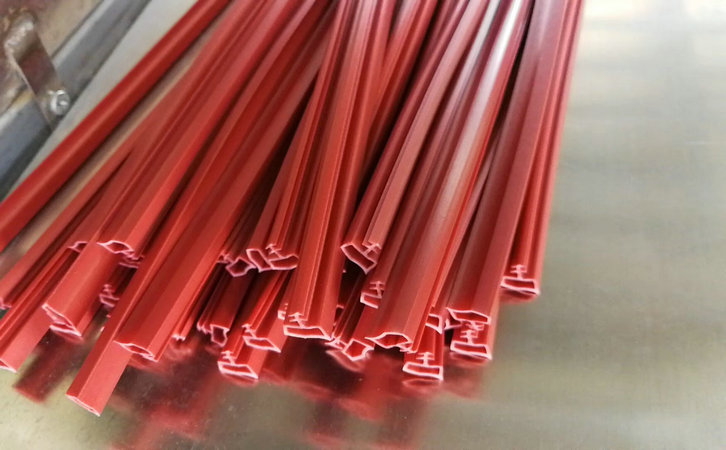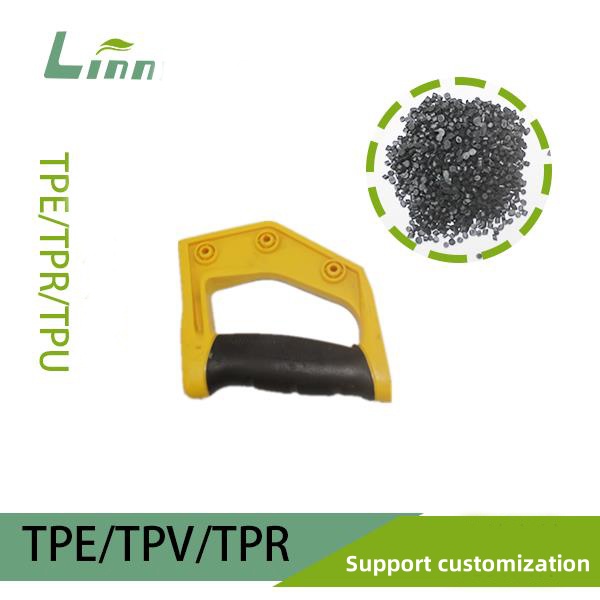Having spent years knee-deep in the world of rubber and plastics, I’ve seen firsthand how materials like TPR (Thermoplastic Rubber) can make or break a product’s lifespan. One question I get asked often, especially by those designing or manufacturing with TPR, is: “What stabilizers are used to prevent TPR from aging?” It’s a critical topic, as aging—think cracking, yellowing, or loss of elasticity—can turn a great product into a failure. Whether you’re crafting shoe soles, tool grips, or medical devices, understanding how to protect TPR from degradation is key. In this article, I’ll share my insights on the stabilizers that keep TPR performing over time, drawing from my experience in the field, with a conversational tone to keep things relatable and clear.

Why Does TPR Need Stabilizers?
Before diving into the specifics, let’s talk about why TPR ages in the first place. TPR, a type of thermoplastic elastomer (TPE), is typically based on SBS (styrene-butadiene-styrene) or SEBS (styrene-ethylene-butylene-styrene) block copolymers, often mixed with oils, fillers, and additives. While TPR is prized for its rubber-like flexibility and plastic-like processability, it’s not immune to environmental stressors like:
UV light: Causes yellowing and surface cracking.
Heat: Accelerates chain scission, reducing elasticity.
Oxygen/Ozone: Triggers oxidation, leading to brittleness.
Moisture: Can degrade certain formulations over time.
I’ve seen products like outdoor TPR shoe soles turn brittle after a season in the sun, or indoor grips lose their tackiness after prolonged heat exposure. Stabilizers are the unsung heroes that slow these processes, extending TPR’s usable life. Choosing the right stabilizer depends on the TPR’s composition, application, and environment.
Types of Stabilizers for TPR
Stabilizers work by neutralizing the factors that cause aging, such as free radicals, UV radiation, or heat-induced degradation. Based on my work with TPR across industries, here are the main types of stabilizers used:
Antioxidants
Antioxidants are the first line of defense against oxidative degradation, which happens when oxygen or ozone reacts with TPR’s polymer chains, especially the butadiene in SBS-based TPR. There are two subcategories:
Primary Antioxidants: These scavenge free radicals. Common ones include hindered phenols (e.g., Irganox 1010) and aromatic amines. I’ve found hindered phenols work well for TPR in indoor applications, like tool handles, where heat is the main concern.
Secondary Antioxidants: These break down peroxides formed during oxidation. Phosphites (e.g., Irgafos 168) or thioesters are typical. In one project, we used a phosphite blend in TPR shoe soles to prevent brittleness during storage.
UV Stabilizers
For TPR used outdoors, UV stabilizers are critical to combat photo-degradation from sunlight. These include:
UV Absorbers: These soak up UV rays before they damage the polymer. Benzotriazoles and benzophenones are common. I recall a client using benzotriazole-based stabilizers for TPR garden tool grips, which stayed vibrant after years of sun exposure.
Hindered Amine Light Stabilizers (HALS): These neutralize free radicals formed by UV exposure. HALS are particularly effective for SEBS-based TPR, which is often chosen for outdoor durability.
Heat Stabilizers
While TPR isn’t as heat-sensitive as PVC, prolonged high temperatures can degrade it. Heat stabilizers, often combined with antioxidants, include phosphites or specialized blends. In a factory I visited, TPR used in automotive seals was stabilized with a phosphite-phenolic blend to withstand engine bay heat.

Anti-Ozonants
Ozone can crack TPR, especially SBS-based types with double bonds. Anti-ozonants like waxes or specific chemical blends form a protective barrier. I’ve seen these used in TPR gaskets for outdoor equipment, preventing cracks even in high-ozone environments.
To make this clearer, here’s a table summarizing the stabilizers and their roles:
| Stabilizer Type | Function | Common Examples | Best for TPR Application |
|---|---|---|---|
| Antioxidants | Prevent oxidative degradation | Hindered phenols, phosphites | Indoor products (e.g., grips, seals) |
| UV Stabilizers | Protect against UV-induced damage | Benzotriazoles, HALS | Outdoor products (e.g., shoe soles) |
| Heat Stabilizers | Enhance thermal stability | Phosphites, phenolic blends | High-heat environments (e.g., auto parts) |
| Anti-Ozonants | Resist ozone cracking | Waxes, chemical blends | Outdoor seals, gaskets |
How Stabilizers Are Chosen for TPR
Picking the right stabilizer isn’t a one-size-fits-all decision. In my experience, it hinges on several factors:
TPR Composition
SBS-based TPR is more prone to oxidation due to its double bonds, so it often needs robust antioxidants and anti-ozonants. SEBS-based TPR, with its saturated structure, is inherently more stable but benefits from UV stabilizers for outdoor use. I once advised a client to switch from SBS to SEBS-based TPR for outdoor toys, paired with HALS, to avoid yellowing.
Application Environment
Indoor products like yoga mats can get by with basic antioxidants, while outdoor products like garden hoses need UV stabilizers and anti-ozonants. For a medical TPR project, we avoided stabilizers with potential toxicity, opting for FDA-compliant options.
Cost vs. Performance
Stabilizers add cost—sometimes 5–15% of the material price. For budget-conscious projects, I’ve used cost-effective phenolic antioxidants for indoor TPR products. For high-end applications, like automotive seals, a premium blend of HALS and phosphites is worth the investment.
Regulatory Requirements
In regulated industries like medical or food-contact applications, stabilizers must meet strict standards (e.g., FDA, EU REACH). I’ve worked with suppliers to ensure TPR for medical tubing used only non-toxic, compliant stabilizers.
Real-World Examples from My Experience
To give you a sense of how this plays out, let me share a couple of stories. In one project, a client was developing TPR shoe soles for outdoor work boots. Initially, the soles yellowed and cracked after a few months in sunny conditions. We analyzed the formulation and found it lacked UV stabilizers. By adding a benzotriazole-based UV absorber and a touch of HALS, the soles lasted three times longer without visible aging.
Another time, I consulted for a factory producing TPR tool grips. The grips were losing elasticity in hot warehouses. We introduced a phenolic-phosphite antioxidant blend, which stabilized the material against heat-induced chain scission, extending the product’s shelf life significantly.

Challenges and Considerations
Using stabilizers isn’t without its challenges. Here are some pitfalls I’ve encountered:
Over-Stabilization: Adding too much stabilizer can affect TPR’s flexibility or increase costs unnecessarily. I always recommend testing small batches to find the sweet spot.
Compatibility: Some stabilizers can react with other additives (e.g., fillers or oils), causing haze or reduced performance. In one case, a client’s TPR turned cloudy because the UV stabilizer clashed with a mineral filler.
Processing Impact: Stabilizers can alter TPR’s melt flow, requiring adjustments in molding parameters. I’ve seen factories tweak injection temperatures to accommodate stabilized TPR.
Environmental and Sustainability Aspects
Stabilizers don’t just extend TPR’s life—they also play a role in sustainability. By preventing premature aging, they reduce waste from failed products. However, some stabilizers (e.g., certain amines) raise environmental concerns due to potential toxicity. In recent years, I’ve noticed a shift toward eco-friendly stabilizers, like bio-based antioxidants or halogen-free UV stabilizers, which align with stricter regulations.
Recycling is another consideration. Stabilized TPR can be recycled, but high stabilizer content might affect reprocessed material quality. In a recycling project I worked on, we separated stabilized TPR scraps to ensure consistent performance in the next product cycle.
Future Trends in TPR Stabilization
The stabilizer world is evolving. I’ve been excited to see innovations like:
Bio-Based Stabilizers: Derived from renewable sources, these reduce reliance on petrochemicals. I saw a prototype TPR with plant-based antioxidants at a trade show, and the results were promising.
Nanoparticle Stabilizers: Emerging research uses nanoparticles (e.g., nano-TiO2) for enhanced UV protection. These are still niche but could revolutionize outdoor TPR applications.
Multifunctional Blends: New stabilizer packages combine antioxidant, UV, and heat stabilization in one, simplifying formulation. I’ve tested these in SEBS-based TPR, and they’re a game-changer for complex environments.

Practical Tips for Using Stabilizers in TPR
Here’s what I’ve learned to ensure stabilizers work effectively:
Work with Suppliers: Collaborate with material suppliers to select stabilizers tailored to your TPR’s formulation and use case.
Test Extensively: Conduct accelerated aging tests (e.g., UV exposure or heat aging) to verify stabilizer performance. I always push clients to test in real-world conditions too.
Balance Cost and Longevity: Don’t skimp on stabilizers for critical applications, but avoid overkill for low-demand products.
Stay Regulatory-Compliant: For medical or food-contact TPR, ensure stabilizers meet relevant standards to avoid costly recalls.
Closing Thoughts
To keep TPR from aging, antioxidants, UV stabilizers, heat stabilizers, and anti-ozonants are your go-to tools, each tackling specific degradation mechanisms. The right choice depends on whether your TPR is SBS or SEBS-based, its environment, and your budget. From shoe soles to medical tubing, stabilizers can make the difference between a product that lasts months and one that endures years. If you’re grappling with TPR aging in a specific project, share the details—I’d love to help you find the perfect stabilizer solution. Materials science is a puzzle, but with the right pieces, you can build something that stands the test of time.

Related Q&A
1. Can I use the same stabilizers for SBS and SEBS-based TPR?
Not always. SBS-based TPR needs stronger antioxidants and anti-ozonants due to its double bonds, while SEBS-based TPR benefits more from UV stabilizers for outdoor use.
2. Are stabilizers safe for TPR in medical applications?
Yes, but only if they’re FDA or EU REACH-compliant. Always verify with suppliers and test for biocompatibility to ensure safety.
3. How do I know if my TPR needs UV stabilizers?
If the product will be exposed to sunlight (e.g., outdoor gear), UV stabilizers like HALS or benzotriazoles are essential to prevent yellowing and cracking.
4. Do stabilizers affect TPR’s recyclability?
They can, especially if used in high concentrations. Work with recyclers to ensure stabilized TPR maintains performance in reprocessed products.
5. How long can stabilizers extend TPR’s lifespan?
It varies, but proper stabilization can extend TPR’s life by 2–5 years or more, depending on the environment and stabilizer quality.





